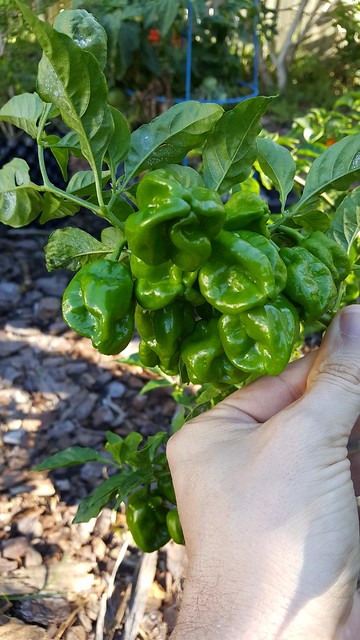The_NorthEast_ChileMan said:I'm not a botanist but I have been growing peppers since '95, have belonged to many forums and seen thousands of pix of pepper plants and while I've seen a few mutants with a lot of pods in one node I've never seen one that had almost 20 in one node. Add five double pods to the mix and you have a mutant IMO!
Again not a botanist but I believe it's just a one off mutant plant with unique genetics.
I believe this will be the telling tale and I also believe it will not resurface in the plants progeny from seed.
Start your preparation for the aphid infestation now as I believe it's not a matter of IF but WHEN. I hope I'm wrong but an ounce of prevention is worth a pound of cure.
`
Also not a botanist... but I recall reading something about an fa gene for fasciculation in Wang and Bosland (HortScience August 2006 41:1169-1187). I can't access the original articles that described fasciculation and am unable to find a picture of a pepper with this mutation, so I can't say this is fasciculation or if it looks the same, but it sure sounds similar. Here's the description of the mutation:
"Fasciculation in pepper is expressed as a shortening of internodes, resulting in compact, bushy plants and expressed as flowers and fruits borne on bunched, compounded nodes conferred by the recessive fa gene. Van de Beek and Ltifi observed the variation in fasciculation, inferring that minor genes could be involved in the expression of fasciculation, operating in the presence of the fa gene."



